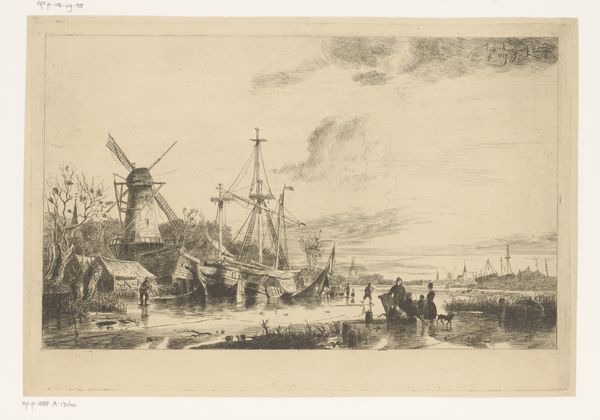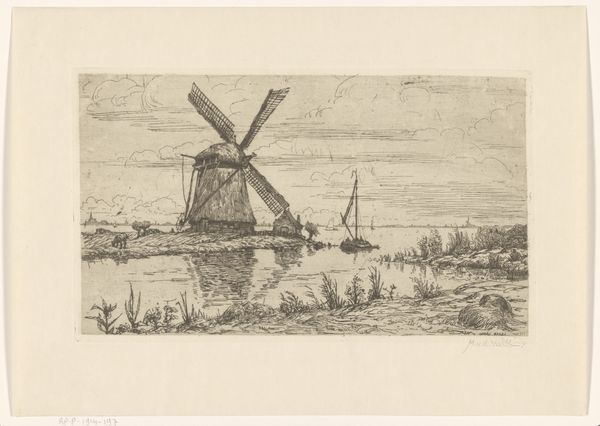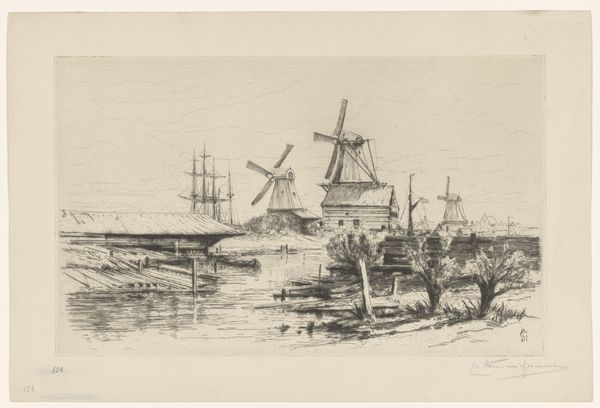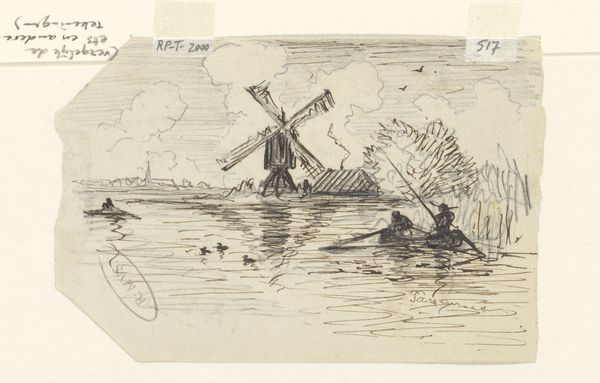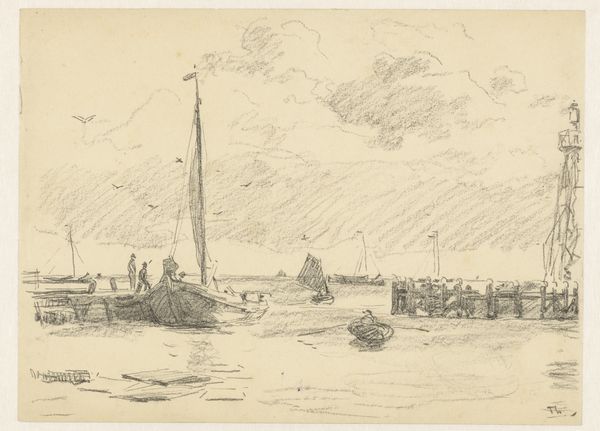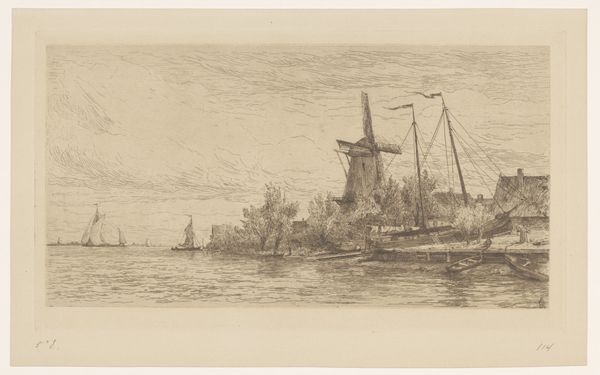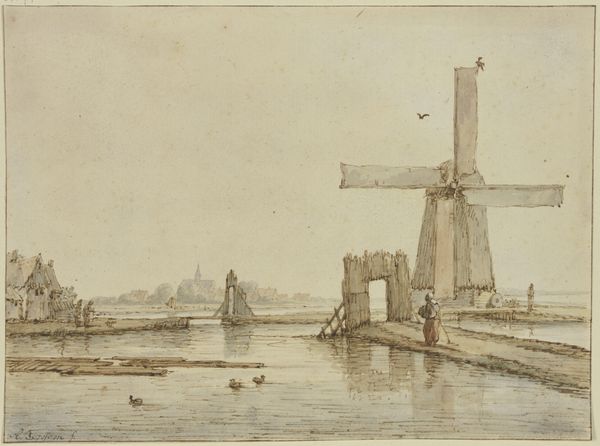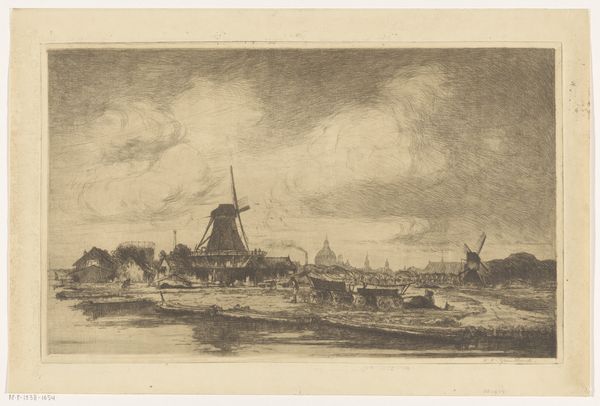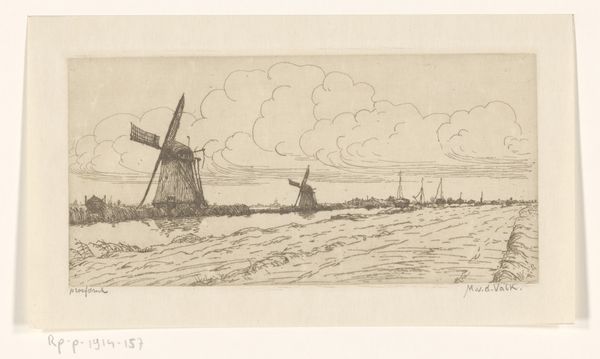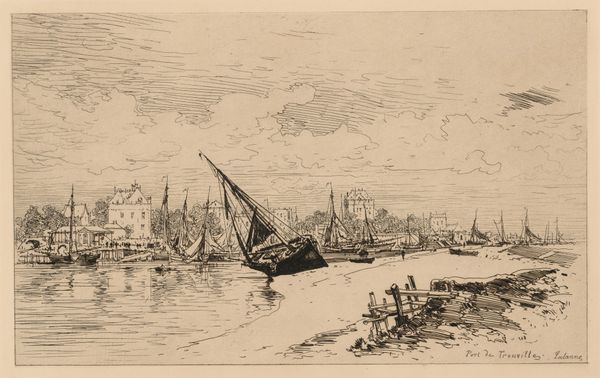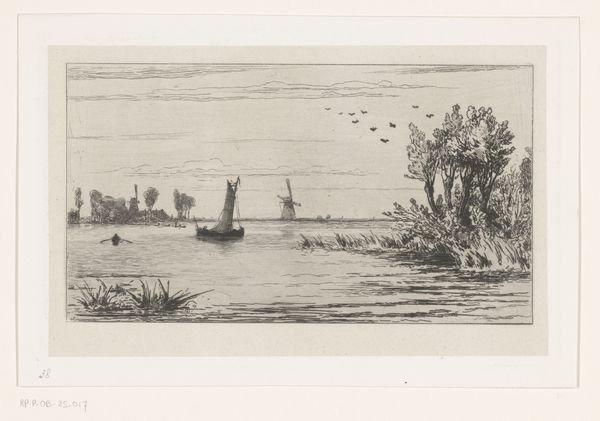
drawing, ink
#
drawing
#
landscape
#
ink
#
realism
Dimensions: height 107 mm, width 137 mm
Copyright: Rijks Museum: Open Domain
Curator: This is "Rivierlandschap," or "River Landscape," by Johannes Tavenraat, created in 1868. The piece resides here at the Rijksmuseum and is a drawing rendered in ink. Editor: There's such an evocative bleakness to it. I'm immediately struck by how the ink seems to convey the somber atmosphere of a grey day by the water. Curator: Absolutely, and the landscape genre itself was going through a transformation in the 19th century. Artists increasingly engaged with depicting not just pretty views, but also the realities of life and labor within these settings. This realism offers a social commentary. Editor: I agree. You see people working; look at the individuals in the boat. It's such an intimate and detailed portrayal of labor, making it far more than just a pleasant scene. It also acknowledges its dependence on industry, evidenced in the depiction of the distant windmill. What's your view? Curator: That relationship is key. I think the work’s value extends beyond a visual document of rural life. It mirrors larger cultural shifts and offers a visual entry point into discussing environmental relationships, the role of manual labor, and human interventions in natural spaces at the time. Editor: Exactly. By looking closely at these choices - the use of ink, the portrayal of the human figures, and the integration of a functional windmill within this setting - we can really unpack those elements. It speaks volumes about production and use. Curator: The simplicity of ink further emphasizes the immediate, lived experience—an access point for exploring issues of rural class, the challenges of nature, and societal integration with the land in 19th-century Netherlands. It invites consideration of the less-glamorous dimensions of life during this era. Editor: Well, I initially found it visually appealing but with the weight of societal realities woven in. The emphasis on the ordinary, unidealized, working aspects offers a new angle on the production cycle from the river to the eventual function of milling grain with wind. Curator: For me, its beauty lies precisely in its unvarnished portrayal of existence, a counterpoint to more romantic landscapes and it asks profound questions regarding who is centered and what activities are considered 'worthy' of representation. Editor: And that’s precisely why its artistic merit continues to resonate.
Comments
No comments
Be the first to comment and join the conversation on the ultimate creative platform.
